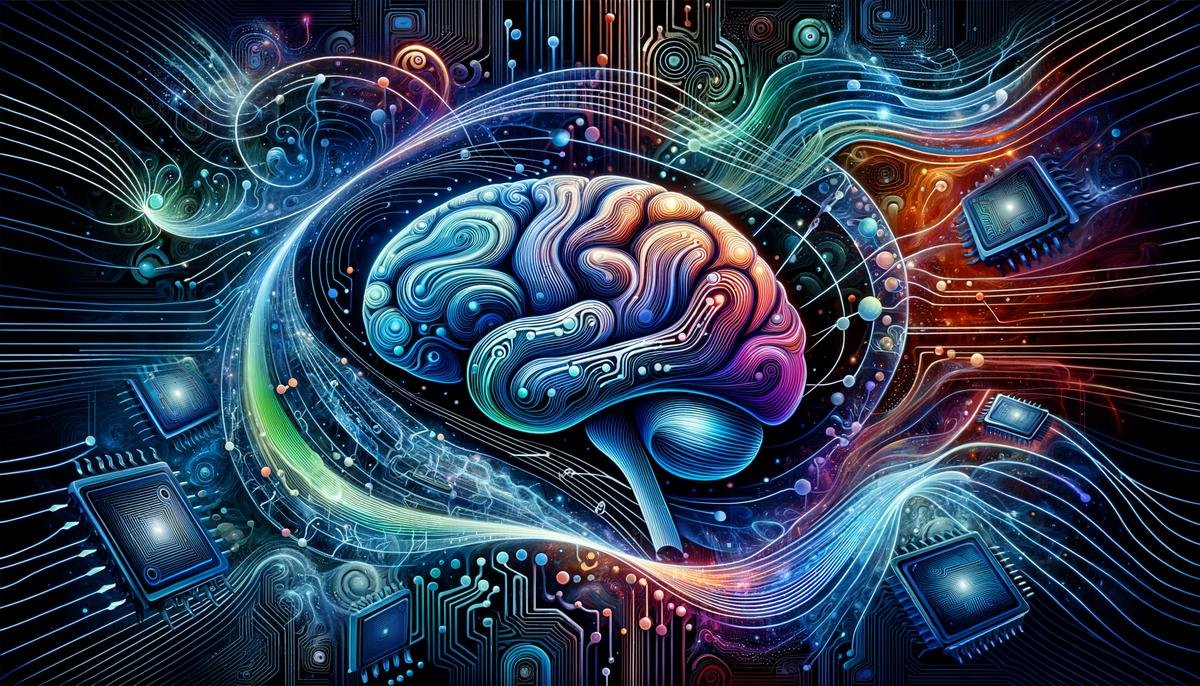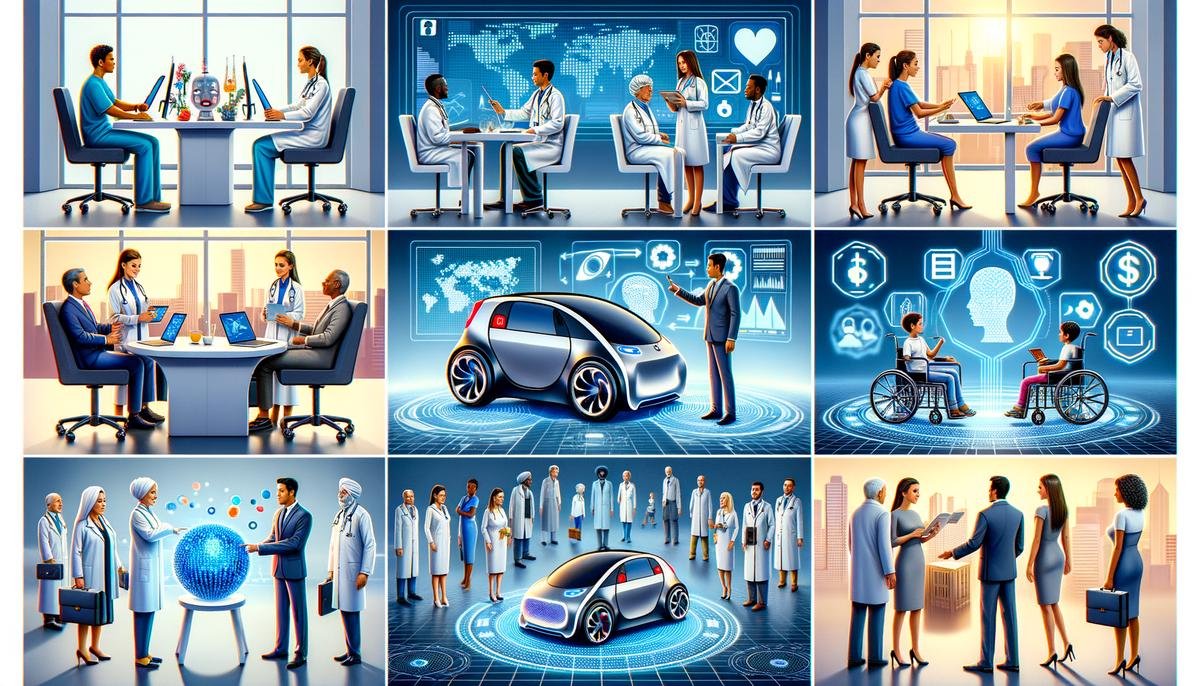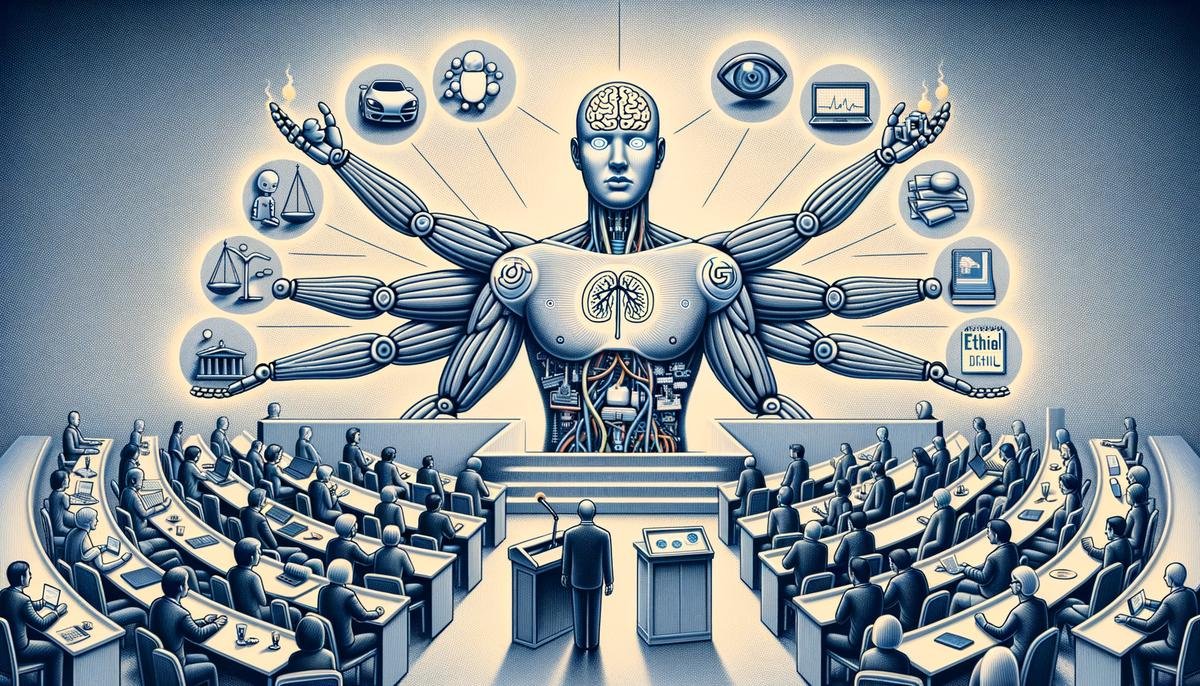The future of robotics paints a picture where machines could operate with the same understanding and flexibility as humans do. This vision hinges on the development of Artificial General Intelligence (AGI), aiming to equip robots with the capability to learn, reason, and make decisions across a wide range of activities. While today’s artificial intelligence excels in specific tasks, AGI represents a significant leap towards creating machines that can adapt to new challenges with human-like ease. The path towards this future is filled with both promise and considerable challenges, requiring advancements that could transform how we interact with technology and its role in society.
The Concept and Evolution of AGI in Robotics
Artificial General Intelligence (AGI) in Robotics: A Comprehensive Guide
When we talk about Artificial General Intelligence (AGI) within the realm of robotics, we’re discussing a future where robots aren’t just programmed to carry out specific tasks but are capable of understanding, learning, and applying knowledge across a broad range of activities, mirroring human intelligence. This concept extends far beyond the current state of artificial intelligence (AI), where machines excel in singular, predefined tasks but stumble when faced with unfamiliar scenarios.
AGI aims to create machines that can reason, solve problems, comprehend complex ideas, and even possess creativity, much like a human. Unlike today’s AI, which might dominate at playing chess or diagnosing diseases but can’t seamlessly switch between tasks or understand context the way humans do, AGI-equipped robots would navigate these transitions effortlessly.
The core of AGI in robotics focuses on flexibility and adaptability. Currently, most robots work within a narrow scope—manufacturing robots weld and assemble car parts with incredible precision, and robotic vacuum cleaners navigate our homes to keep them clean. However, these machines are limited by their programming and cannot operate beyond their specific functions.
For AGI to be fully realized in robotics, several advancements are needed. First, there’s the challenge of developing a robot’s ability to learn and adapt in real-time. This involves not just processing vast amounts of data but understanding and applying new information dynamically, a process known as machine learning.
Moreover, achieving AGI requires significant improvements in natural language processing (NLP) and computer vision. Robots need to understand and generate human-like dialogues to interact seamlessly with people. Similarly, they must interpret and respond to visual data as effectively as humans, whether it’s recognizing objects, understanding complex scenes, or inferring emotional states from facial expressions.
Another critical aspect is problem-solving and decision-making. AGI-equipped robots would need to navigate unforeseen challenges without explicit instructions, relying on logical deduction, past experiences, and even creative thinking to develop solutions.
While the prospect of AGI in robotics raises exciting possibilities—from autonomous robots assisting in disaster relief operations to personal robots aiding in everyday tasks—it also poses ethical and societal questions. Concerns around employment, privacy, security, and the moral implications of machines making decisions have sparked widespread debate.
In conclusion, Artificial General Intelligence represents a monumental leap forward in our quest to create machines that can truly comprehend and interact with the world in a human-like manner. Despite the significant challenges that lie ahead, the pursuit of AGI continues to drive innovation in robotics, with the potential to revolutionize how we live, work, and interact with the technology around us.

Technical Challenges in Developing AGI Systems
Understanding the Complexities of Energy Consumption in AGI Systems
Creating truly adaptive Artificial General Intelligence (AGI) systems is a landmark achievement science is marching towards. Yet, this path is fraught with numerous technical obstacles, one of the foremost being the high energy consumption levels that AGI systems necessitate. Unlike simpler artificial intelligence (AI) that performs predefined tasks within a narrow scope, AGI aims to replicate human-like cognitive abilities requiring massive computational power, and consequently, considerable energy.
Energy efficiency becomes a critical issue, especially when scaling these systems for broader or more complex applications. For AGI systems to operate within a sustainable framework, researchers and developers are pressed to innovate ways to minimize energy usage without compromising the system’s capability.
Integration and Compatibility Challenges
Another major hurdle is the integration of AGI systems into existing technological infrastructures. As AGI systems are designed to perform a broad spectrum of tasks, ensuring they seamlessly interact with diverse software and hardware becomes a considerable challenge. This integration issue isn’t just about making AGI systems work within certain environments but also ensuring they can adapt and learn from new and unforeseen technological advancements or scenarios.
The compatibility conundrum extends to communication between AGI systems and humans as well. Creating interfaces that allow intuitive interaction without necessitating specialized knowledge from users is a puzzle that designers and AI experts are still trying to solve. This difficulty is compounded by the need for AGI to understand and interpret a vast array of human emotions, intentions, and subtleties in communication.
Safety and ReliabilityEnsuring the safety and reliability of AGI systems is paramount, given their potential impact on society. The complexity of AGI systems introduces a higher probability of unexpected behaviors, particularly when these systems are placed in dynamic environments that they must learn to navigate in real-time. Researchers must devise rigorous testing methodologies and fail-safes to prevent malfunction or harmful decisions made by AGI systems.
Moreover, as AGI ventures closer to achieving human-like cognitive function, ensuring its decisions are ethically sound and do not inadvertently harm humans or the environment becomes a substantial area of focus. This involves not just programming ethical guidelines but also teaching AGI systems the nuances of ethical decision-making, a task easier said than done.
Achieving Interdisciplinary CollaborationAGI’s development is not solely a task for programmers and AI researchers; it requires interdisciplinary collaboration across fields as diverse as neuroscience, psychology, ethics, and more. This collaborative effort is crucial to understanding and replicating the complex web of human cognition and behavior in artificial systems. However, fostering effective collaboration across these disciplines poses significant hurdles, including differing terminologies, methodologies, and objectives.
Each of these hurdles represents a substantial area of research and development in their own right. Addressing them demands not only technical ingenuity but also thoughtful consideration of the societal impact of AGI. As the field progresses, overcoming these challenges will mark significant milestones towards the creation of AGI systems capable of adapting and thriving in the multifaceted real world.

The Role of AGI in Transforming Various Industries
Artificial General Intelligence (AGI) is rapidly becoming a transformative force across various sectors beyond just robotics. In this exploration, we turn our focus to how AGI could revolutionize key areas including healthcare, finance, education, and transportation, providing a broad understanding of its potential impact.
In healthcare, AGI could dramatically improve patient outcomes and efficiency. By harnessing the power of AGI, healthcare providers can offer personalized treatment plans based on the comprehensive analysis of patient data, which includes genetics, environment, and lifestyle factors. This tailored approach could lead to more effective treatments with fewer side effects. Moreover, AGI could streamline administrative tasks, allowing medical professionals to spend more quality time with their patients.
The finance sector stands to gain significantly from AGI as well. AGI can analyze market trends, predict stock performance, and automate trading at a level far beyond current capabilities. This could lead to more stable markets and better investment strategies. Furthermore, AGI could enhance fraud detection systems, protect against financial crime, and improve customer service through intelligent virtual assistants capable of understanding and solving complex queries.
In the field of education, AGI offers the potential to revolutionize learning by personalizing the educational experience. By adapting to each student’s learning style, pace, and interests, AGI could create a more engaging and effective education system. It can identify gaps in knowledge and recommend resources or activities to bridge these gaps, helping students achieve mastery more efficiently.
Transportation could be one of the most visibly transformed sectors. AGI could take autonomous vehicles to new heights of efficiency and safety, managing complex road situations in real-time and communicating with other vehicles to reduce traffic congestion. Furthermore, AGI could optimize logistics and supply chains, reducing delivery times and costs by predicting and mitigating potential disruptions.
While the promise of AGI in these sectors is immense, it’s important to approach its development with caution. Issues such as privacy, security, and the potential for job displacement require careful consideration and proactive management. Moreover, ensuring that AGI systems are transparent and their decisions explainable is crucial for building trust and ensuring accountability.
In conclusion, AGI represents a frontier of vast opportunities and challenges. Its potential to revolutionize key sectors such as healthcare, finance, education, and transportation suggests a future where AI not only automates tasks but also enhances decision-making, creativity, and personalization. As we stand on the cusp of this exciting era, the focus must remain on harnessing AGI’s capabilities responsibly and ethically, ensuring that the benefits are widely distributed and aligned with the broader goals of society.

Ethical Considerations and Future Implications of AGI
With the rapid advancements in Artificial General Intelligence (AGI) within the realm of robotics, several ethical dilemmas have emerged, underscoring the complexity of integrating such advanced systems into daily life. These dilemmas revolve around the impact of AGI on privacy, the potential for increased surveillance, bias and discrimination in AI decision-making, the moral responsibility of robots, and the long-term effects on employment and human skills. Each of these areas presents unique challenges that require careful consideration and proactive management to ensure the responsible development and use of AGI in robotics.
Privacy concerns are at the forefront of ethical debates surrounding AGI in robotics. As robots become more integrated into personal and professional spaces, the amount of data they collect increases exponentially. This raises questions about who has access to this data, how it is used, and the measures in place to protect personal information from misuse or unauthorized access. Ensuring robust data protection laws and ethical guidelines are critical to maintaining individuals’ privacy in an age where AGI robots can potentially monitor and record countless aspects of human life.
The potential for increased surveillance through AGI-equipped robots represents another ethical dilemma. Governments and corporations might exploit these capabilities for mass surveillance, leading to a society where every movement and conversation is monitored. Balancing the benefits of AGI in areas such as security and public safety against the risk of creating an intrusive surveillance state is a challenge that demands a thoughtful approach grounded in respect for individual freedoms and privacy.
Bias and discrimination in AI decision-making processes emerge from the data these systems are trained on. If the data reflects historical inequalities or prejudices, AGI systems may perpetuate or even exacerbate these issues. Combatting bias requires ongoing efforts to ensure data diversity and fairness, alongside the development of algorithms that can identify and correct for inherent biases. This is essential for building trust in AGI systems and ensuring they serve all segments of society equitably.
The question of moral responsibility and accountability in the actions taken by AGI robots is particularly vexing. As these systems make increasingly complex decisions, pinpointing responsibility when things go wrong—be it an accident involving an autonomous vehicle or a flawed decision in healthcare—becomes challenging. Establishing clear frameworks for accountability and developing systems that can explain their decision-making processes are steps towards addressing this dilemma.
Finally, the impact of AGI on employment and human skills is a significant ethical consideration. While AGI has the potential to automate routine tasks, freeing humans for more complex and creative work, there’s also a risk of widespread job displacement across various sectors. Ensuring that the transition toward a more automated future includes plans for workforce retraining and education is vital for mitigating negative impacts on employment.
These ethical dilemmas underscore the importance of a multidisciplinary approach to AGI development in robotics, combining technological innovation with insights from ethics, law, sociology, and other relevant fields. By addressing these challenges head-on, societies can harness the benefits of AGI technologies while safeguarding fundamental human rights and values.

Artificial General Intelligence stands not just as a technological goal but as a beacon for the future of human-machine interaction. With every step closer to achieving AGI, we unlock new potentials for machines to assist, enhance, and perhaps even revolutionize various aspects of our lives. However, this progress brings with it a responsibility to address the ethical and societal implications that accompany such power. The development of AGI in robotics offers a canvas upon which we could paint a future that reflects the best of human innovation, ethical considerations, and a shared vision for a world where technology and humanity progress hand in hand.



